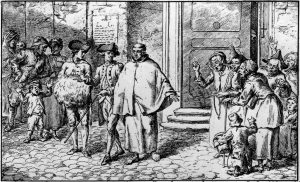Impact of Legal Secularization in the Late 20th Century on Ireland
In ancient times, secularization was deemed to mean the legal transfer of papal property to the state or a civilian. It was first used in 1648 when control of the church was transferred to the state. Christian Churches owned huge chunks of land, while religious institutions located in non-Christian countries also owned vast properties. These were secularized by the respective states. The dissolution of Henry VIII”s monasteries is believed to have been the first step towards secularization. The definition of secularization was then edited to mean the reduction of influence that religion has over the state. Currently, religious institutions have great powers over the state than they originally did.
The general secularization picture in Ireland and its effects therein

Assessing the extent of the effects that secularization has had on modern day Ireland presents a number of difficulties. The automatic difficulty is the contradictory definition applied in the Irish census. The writings of the initial sociological study in Northern Ireland indicated that religion at that time was mainly an affair of freethinkers and atheists. These two groups represented only 0.02 percent of the entire population. A further 0.04 percent did not wish to disclose their religion. Since this time the Irish people have been reserved about disclosing the religious institution which they pledge allegiance to. This custom can be attributed to the fact that there has been increased freedom, allowing people to associate with the religion of their choice. This freedom was seen as a way of encouraging people to be affiliated to a certain religion, so as to make any census easy and credible. The result is that a majority of people sought to attach themselves to certain religions.
However, once a separate category of religious stand-alone people was introduced in 1991, it led to an increase in the number of non-stated persons from 3.7 percent to 7.3 percent. After more research was conducted in an attempt to ask individuals if they paid homage to any particular religion, the number of independent people was seen to have increased. In the 2001 census in Ireland a slightly higher percentage -9.7%- cited their religious affiliation, while 4.2 percent were rated as “non-stated.” These results therefore confirm that if individual are allowed the freedom to choose which religious institution to respect, the end result would be that most of the existing religious identities would be faced with extinction. Due to the lack of census figures in previous census activities before 1991, the use of survey results to try and group people as independents is a reliable way to help assess the population. The results are seen to suggest that most people in Ireland are independent when it comes to religion, and this is a follow up to the secularizing trend that was started in 1960s.
According to the 2002 census data in Ireland, religious independents then constituted 10 percent of the adult population, an identical figure to the 2001 census. Interestingly, the total number of religious independents are now twice as the number of all Protestants put together. The largest groups in Ireland are Presbyterians, Catholics, and Anglicans. Therefore, secularizing tendencies in Ireland have led to a growth of religion and religious independents in Ireland.
Secularization explanation
Where do religious independents come from? Religious sociology scholars have pointed at two main sources. The main source is the religious groups – Protestants mainly – that emphasize deliberate membership, uphold secularization, and do not ask for over-commitment from their followers. It has been argued that such groups are the ones that lose a lot of support when the popularity of religion is tested. In contrast, theorists who analyze traditional secularization argue that the growth of religious independents will emerge to the detriment of the basic religious groups. Empirical evidence suggests that almost every religious grouping has suffered loss of membership, but it has been the Protestants that have had massive defection in recent years. Religious independence in Ireland has been heavily reliant on the changing loyalty towards mainstream religions. Catholics, Anglicans, Presbyterians, and Protestants have been consistently rising in numbers since 1968. However, at around 1970, Catholics decreased in number, while the proportion of Anglicans and Presbyterians rose significantly. Most of the Irish people who had remained true to their childhood religion later defected massively to the Protestants.



